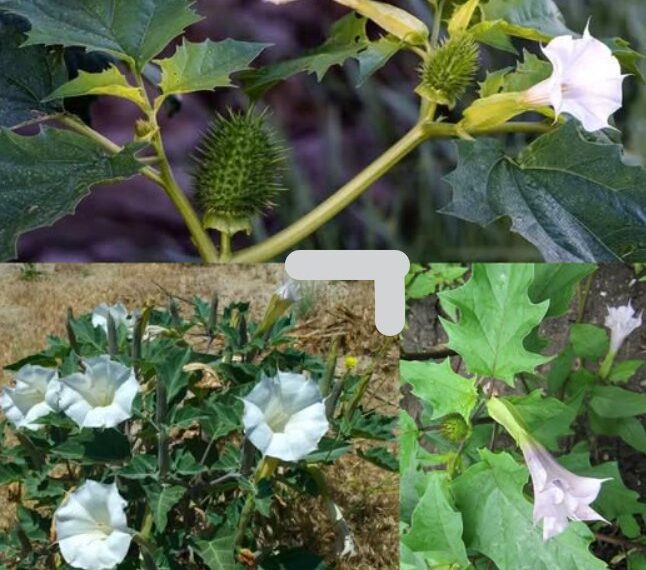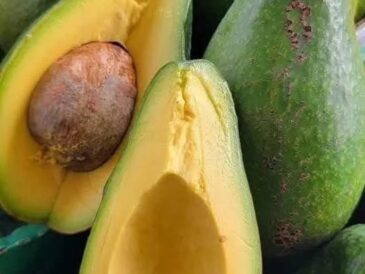Oleander is far from alone. Here are several other popular garden plants that carry serious toxicity:
1. Foxglove (Digitalis purpurea)
- Stunning spires of purple, pink, or white bell-shaped flowers.
- Contains digitalis, used in heart medication—but in raw form, it’s deadly.
- All parts are toxic, especially the leaves.
- Can cause nausea, dizziness, confusion, and fatal heart arrhythmias.
2. Lily of the Valley (Convallaria majalis)
- Delicate white bells with a sweet fragrance.
- Contains convallatoxin, a cardiac glycoside.
- Even a small amount can cause vomiting, slowed heartbeat, and seizures.
3. Castor Bean Plant (Ricinus communis)
- Grown for its striking red stems and tropical-looking leaves.
- Produces ricin, one of the most toxic natural substances known.
- Just a few seeds can be lethal to children or pets.
4. Hydrangea
- Common in decorative hedges and flower beds.
- Contains cyanogenic glycosides, which release cyanide when metabolized.
- Ingesting the leaves or flowers can lead to stomach pain, sweating, and confusion.
5. Datura (Angel’s Trumpet)
- Large trumpet-shaped flowers, intoxicating scent.
- Contains tropane alkaloids (scopolamine, hyoscyamine, atropine).
- Can cause hallucinations, confusion, and even death.
- Historically used in shamanic rituals—now considered highly dangerous.
6. Rhododendron & Azalea
- Popular for their colorful spring blooms.
- Contain grayanotoxins, which interfere with sodium channels in the body.
- Can cause drooling, vomiting, paralysis, or heart failure in pets and humans.
Why We Keep Planting Them
So why do people continue to cultivate toxic plants? Several reasons:
1. Aesthetic Value
Many toxic plants are visually spectacular. Their dramatic blooms, foliage, or growth patterns make them attractive to gardeners and landscapers.
2. Lack of Awareness
Most gardeners are unaware of the toxicity. Plant tags and nursery labels often don’t include warnings. A beautiful shrub may seem harmless—until it causes a problem.
3. Cultural or Symbolic Meaning
Some plants, like lily of the valley or oleander, have symbolic meaning in weddings, funerals, or religious traditions. Others are used in herbalism or folklore.
4. Historical Use in Medicine
Ironically, many toxic plants have medicinal roots. Digitalis from foxglove is used in heart medications. But the line between healing and harm is razor-thin—and dosage is everything.
The Hidden Risk to Children and Pets
Children are naturally curious. Bright flowers, berries, and leaves are enticing. But that curiosity can be dangerous—especially when it comes to plants like castor bean or foxglove.
Pets, particularly dogs and cats, are also at risk. Some will chew on leaves or dig up roots. According to veterinary toxicology reports, plant poisoning is a common emergency in pets—often involving azaleas, lilies, or sago palms.
If you’re gardening with kids or animals around, it’s crucial to know what you’re planting. Many safer alternatives exist that still offer beauty without the risk.
Toxic Doesn’t Always Mean “Bad”
It’s important to note that toxic plants aren’t evil. In nature, toxicity is a defense mechanism. Plants can’t run away from threats, so they evolved chemical armor. This not only protects them from being eaten but often contributes to their resilience in harsh environments.
Some toxic compounds—like those in yew, willow, or even opium poppies—have been transformed into life-saving medications. The key is knowledge, respect, and responsible use.
Tips for Safe Gardening with Toxic Plants
If you choose to grow potentially harmful plants, follow these guidelines:
- Label Everything Clearly
Mark toxic plants, especially if you have guests, kids, or pets. - Keep Them Out of Reach
Plant harmful species in raised beds or containers where they’re less accessible. - Educate Yourself and Others
Learn to recognize common poisonous plants. Teach children not to eat anything from the garden without adult supervision. - Wear Gloves When Handling
Some plants can irritate skin or transfer toxins through contact. - Have Emergency Numbers Ready
Know how to contact poison control or your local vet in case of accidental ingestion.
Conclusion: A Garden of Paradox
The idea that something so beautiful can also be dangerous is both poetic and unsettling. It speaks to a greater truth about nature: that power and beauty often go hand in hand—and that wisdom lies in recognizing both.
Just because a plant is toxic doesn’t mean it has no place in your garden. But planting with awareness is essential. A garden is more than a collection of colors—it’s a living ecosystem, full of relationships, risks, and rewards.
By understanding the plants we choose to grow, we can cultivate not only beauty, but also safety, respect, and connection with the natural world.
So next time you admire a blooming oleander or a towering foxglove, remember: there’s more to it than meets the eye. Beneath the petals may lie a potent power—one that demands your attention.





